The integration of smart home devices has become increasingly popular in recent years, and one of the leading systems is the Google Home. With its voice-controlled technology, it allows you to control your home appliances with just a few simple commands. However, if you are someone who owns both Google Home and HomeKit devices, you may be wondering how to connect them together for a more seamless smart home experience.
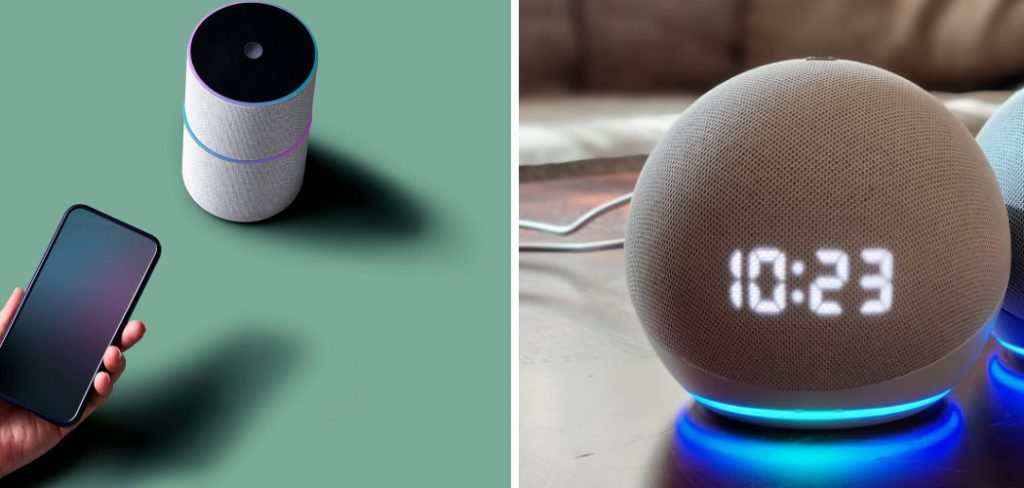
The main advantage of connecting Google Home to HomeKit is the ability to control your smart home devices using voice commands. This integration allows for seamless integration between different platforms, allowing users to take advantage of features from both Google Home and HomeKit. In this blog post, You will learn in detail how to connect google home to homekit.
Step-by-step Instructions for How to Connect Google Home to Homekit
Step 1: Inspect the Compatibility
Before you begin the setup process, it is important to check if your Google Home device is compatible with HomeKit. As of now, only certain generation of Google Nest products are supported by HomeKit.
Step 2: Update Your Google Home App
To ensure that your Google Home app is up-to-date, go to the App Store or Play Store and search for any available updates. Once the app is updated, open it and proceed to the next step. Open the app and select the device you want to connect to HomeKit from the list of devices on your home screen. If your device is not listed, make sure it is connected to your Wi-Fi network.
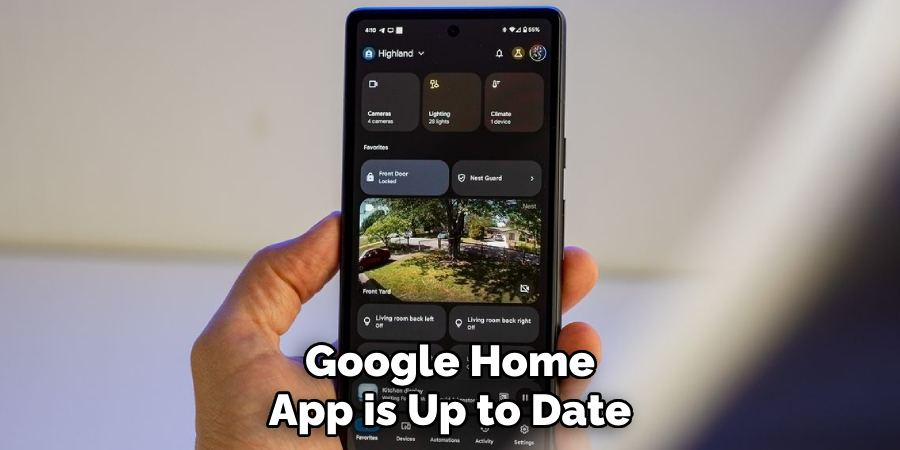
Step 3: Tap on the Settings Icon
In the top right corner of the selected device’s screen, tap on the settings icon. This will open up a new page with various settings and options. Under the Device Settings section, select “More Settings” to access additional device options.
Step 4: Choose HomeKit under Services
Scroll down until you see the “Services” section and select “HomeKit”. Toggle the switch to enable HomeKit. A prompt will appear asking for permission to control your Google Home device with HomeKit. Enter your Apple ID and password when prompted. This is required for authentication and authorization between Google Home and HomeKit.
Step 5: Choose a Room
Select the room where your Google Home device is located. This will help you easily identify and control your device through HomeKit. You can also choose to assign accessories such as lights or thermostats to your Google Home device for easier control through HomeKit.
Step 6: Complete Setup
Once you have chosen your room and assigned accessories, tap on “Done” in the top right corner to complete the setup process. Now that your Google Home is connected to HomeKit, you can access it through the Apple Home app or using Siri voice commands. You can also control it through other devices such as an Apple Watch or iPad.
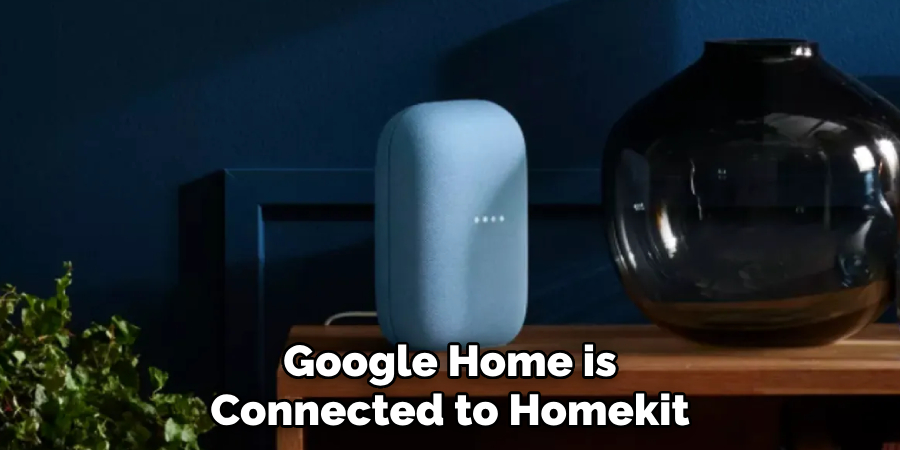
Congratulations, you have successfully connected your Google Home device to HomeKit! Now you can enjoy the convenience of controlling your home through both Google Assistant and HomeKit, giving you more options and flexibility in managing your smart home devices. Keep an eye out for future updates and improvements to enhance your smart home experience even further.
Safety Tips for How to Connect Google Home to Homekit
- Keep the Google Home device out of reach of children and pets to avoid any accidents or damages.
- Before setting up your Google Home with Homekit, make sure that both devices are connected to the same Wi-Fi network.
- Never share your personal information or Wi-Fi password with anyone when connecting your Google Home to Homekit.
- Always use original and certified power adapters for your Google Home device to avoid any potential electrical hazards.
- Keep the Google Home device away from water or any liquid to prevent damage and potential electric shock.
- Regularly update your Google Home software and check for any firmware updates for enhanced security and protection against vulnerabilities.
- If you encounter any issues while setting up or using your Google Home with Homekit, refer to the user manual or contact customer support for assistance.
B y following these safety tips, you can ensure a smooth and secure experience while connecting your Google Home to Homekit. Remember to always prioritize your safety and the safety of those around you when dealing with any electronic devices. Additionally, be mindful of any potential privacy concerns and regularly review your device’s settings to ensure that your personal information is protected.
What Are the Benefits of Connecting Google Home to Homekit?
There are several benefits to connecting Google Home to Homekit, including:
1. Access to More Devices
By connecting Google Home to Homekit, you can control a wider range of devices with your voice commands. This means you can use Google Assistant and Siri interchangeably to manage your smart home devices.
2. Streamlined Control
With both Google Home and Homekit connected, you can access all of your smart home devices through one central app. This makes it easier to control and manage your devices, without having to switch between multiple apps.
3. Customizable Scenes
Homekit allows you to create customized scenes that combine several smart home actions into one command. By integrating Google Home with Homekit, you can use these scenes with your voice commands, making it even easier to control your smart home.
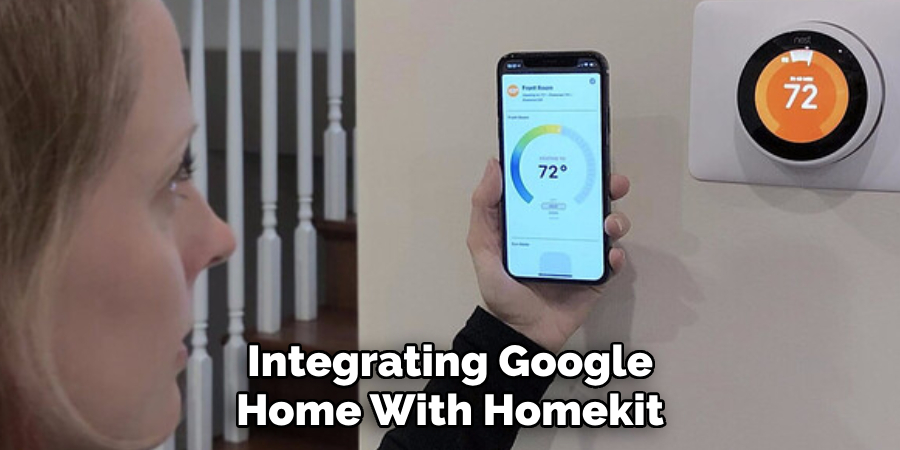
4. Extend Google Home’s Capabilities
Connecting Google Home to Homekit unlocks new capabilities for your smart speaker. For example, you can now use Siri to control your Google Home or add custom voice commands for specific actions using the Shortcuts app on iOS devices.
5. Access to More Third-Party Apps
By connecting Google Home to Homekit, you can also access more third-party apps that are compatible with both platforms. This expands the range of features and functions available for your smart home devices.
6. Improved Automation
With both Google Home and Homekit connected, you can create more advanced automation routines that utilize devices from both platforms. This allows for a more seamless and efficient smart home experience.
7. Greater Convenience
Overall, connecting Google Home to Homekit simply makes managing your smart home more convenient. You can use whichever platform is most convenient for you at any given time, and have access to a wider range of features and devices.
By connecting Google Home to Homekit, you can enhance your smart home experience and make managing your devices even easier.
How Can You Troubleshoot Any Connectivity Issues Between Google Home and Homekit?
When it comes to smart home devices, connectivity issues can be frustrating. If you own both Google Home and Homekit, you might encounter some problems when trying to connect the two. Here are some troubleshooting tips to help you resolve any connectivity issues between Google Home and Homekit.
1. Check Your Wi-Fi Connection
Before attempting to connect Google Home and Homekit, make sure that your Wi-Fi connection is stable. If your Wi-Fi signal is weak or unstable, it can cause connectivity issues with smart home devices.
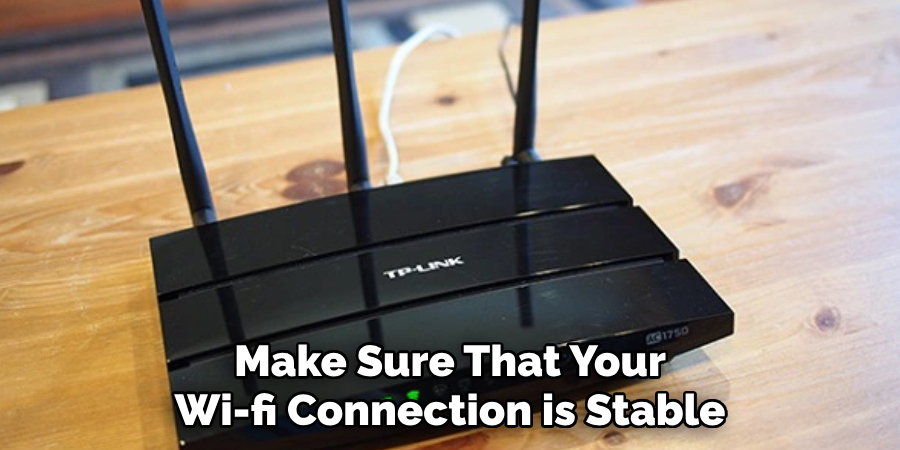
2. Update the Firmware
Ensure that both Google Home and Homekit are running on the latest firmware version. Manufacturers often release updates to improve compatibility with other devices and fix any bugs that may cause connectivity problems.
3. Restart Your Devices
Sometimes, a simple restart can fix connectivity issues. Try unplugging and plugging back in your Google Home and Homekit devices to see if that resolves the problem.
4. Reset Network Settings
If restarting your devices doesn’t work, try resetting the network settings on both Google Home and Homekit. This will clear any stored Wi-Fi networks and force the devices to search for and connect to a new network.
5. Check Firewall Settings
If you have a firewall set up on your Wi-Fi network, it may be blocking the connection between Google Home and Homekit. Make sure that both devices are allowed access through the firewall.
6. Contact Customer Support
If none of these troubleshooting tips work, it’s best to reach out to customer support for both Google Home and Homekit. They will be able to assist you further with any connectivity issues and provide more specific solutions.
Now that you know how to troubleshoot connectivity issues between Google Home and Homekit, you can enjoy the convenience of controlling your smart home with just your voice. Make sure to also regularly check for updates on both devices to ensure smooth compatibility.
Is It Possible to Integrate Third-party Apps or Services With Both Google Home and Homekit After Connecting Them?
Yes, it is possible to integrate third-party apps or services with both Google Home and Homekit after connecting them. This can be done through the use of smart home hubs or platforms such as IFTTT (If This Then That).
IFTTT allows users to create custom applets that connect different devices and services together, enabling them to work together seamlessly. This means that even if a device or service is not officially supported by Google Home or Homekit, it can still be integrated through IFTTT.
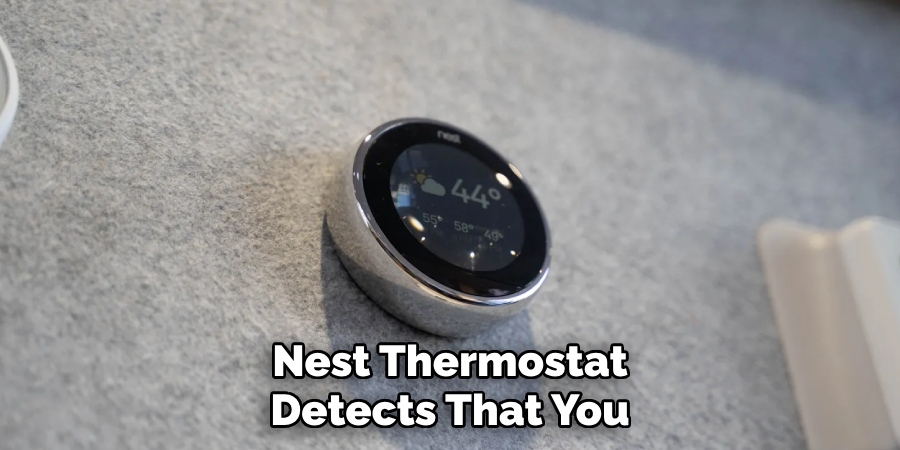
For example, you can use IFTTT to create an applet that turns on your Philips Hue lights when your Nest thermostat detects that you have arrived home. This integration would work with both Google Home and Homekit as long as they are both connected to IFTTT. In addition to IFTTT, there are also other smart home hubs or platforms that allow for integrations between Google Home and Homekit. Some popular options include Samsung SmartThings, Wink, and Hubitat.
Conclusion
The main disadvantage of connecting Google Home to HomeKit is that it requires additional setups and configurations. This can be time-consuming and may require technical expertise. Furthermore, users may experience compatibility issues between different devices connected to Google Home and HomeKit. Not all devices are compatible with both systems, which can limit the functionalities available for the user.
In conclusion, integrating Google Home with HomeKit is a great way to expand the capabilities of your smart home. This allows you to enjoy the convenience and control offered by both platforms, all through one central hub.
By following the steps outlined in this blog, you can easily connect your Google Home device to HomeKit and start controlling all your smart devices with ease. I hope this article has been beneficial for learning how to connect google home to homekit. Make Sure the precautionary measures are followed chronologically.
You Can Check It Out to Connect My Night Owl to Wifi
About
Safety Fic is a distinguished figure in the world of Diy design, with a decade of expertise creating innovative and sustainable Diy solutions. His professional focus lies in merging traditional craftsmanship with modern manufacturing techniques, fostering designs that are both practical and environmentally conscious. As the author of diy, Safety Fic delves into the art and science of Safety Fic-making, inspiring artisans and industry professionals alike.
Education RMIT University
(Melbourne, Australia) Associate Degree in Design (Safety Fic) Focus on sustainable design, industry-driven projects, and practical craftsmanship. Gained hands-on experience with traditional and digital manufacturing tools, such as CAD and CNC software.
Nottingham Trent University
(United Kingdom) Bachelor’s in diyfastly.com and Product Design (Honors) Specialized in product design with a focus on blending creativity with production techniques. Participated in industry projects, working with companies like John Lewis and Vitsoe to gain real-world insights.
Publications and Impact
In diy, Safety Fic his insights on indoor design processes, materials, and strategies for efficient production. His writing bridges the gap between artisan knowledge and modern industry needs, making it a must-read for both budding designers and seasoned professionals.
